Beauty is in the eye of the beholder so there is no doubt that others will have a different idea of the 10 most beautiful animals. However, it’s a good bet that most people would consider the following animals some of the fairest of them all or at least acknowledge that these are some of the most striking.
Of course, in most cases, the beauty of these beasts didn’t arise to please the human eye, but to provide camouflage or warning or make the animal more attractive to the opposite sex. Beauty is a double-edged sword. The same looks that make humans want to protect an animal from extinction were likely the reason that the animal needed to be protected in the first place, as it stimulated a lust for its fur, feathers, or head on the wall. The best way to enjoy the beauty of these animals is by observing them in their natural environment. After all, their beauty does not just come from their colors or shapes, it also comes from the play of muscles under a sleek coat or the intense shine of their eyes. So, here’s a list of 10 of the most beautiful animals on earth to enjoy in as close to natural as we can get.
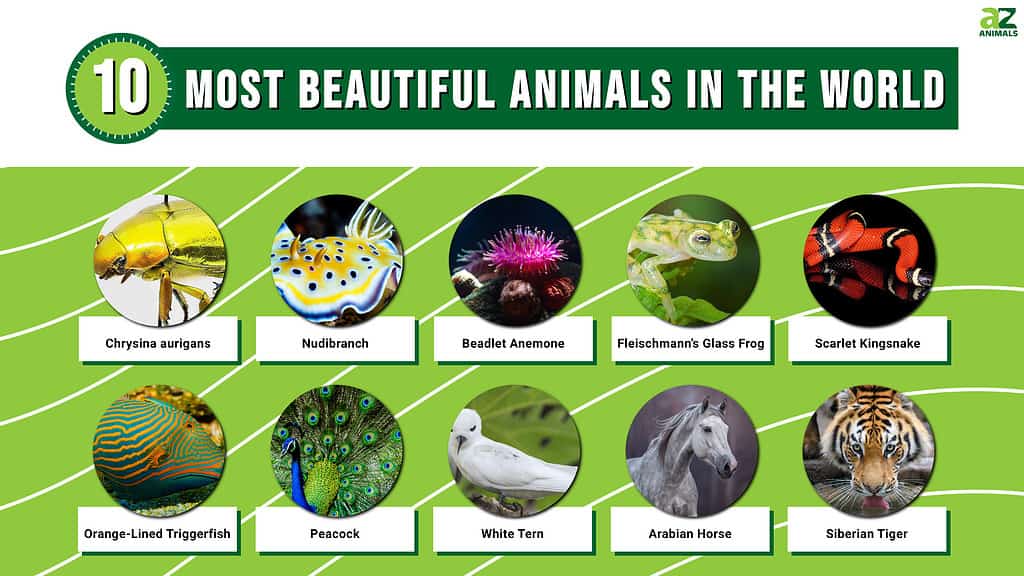
#10 Siberian Tiger

Like a human fingerprint, no two
Siberian
tigers have the exact same stripe pattern.
©Volodymyr Burdiak/Shutterstock.com
Foley editors are the people who add sound effects to movies. One of their secrets is that whenever the moviegoer hears a lion roaring, the sound is probably a tiger roaring. The roar of a lion can sound rather like a groan of pain, but a tiger’s roar is a real roar.
Tigers are the world’s most beautiful apex predators, with their thick, tawny red and black striped coats, bone-crushing fangs, huge, neck-snapping paws, and imperial mien. The Siberian tiger is the largest of these magnificent, endangered cats, with a big male weighing 400 pounds or more and measuring 11 feet in length with a 3 foot long tail. Each tiger has its own unique pattern of stripes, much like the human being’s unique fingerprints. These stripes work to disguise the predatory cat in the wild. A Siberian tiger’s coat becomes thicker and its colors even more brilliant in the winter time, and wide pads on its feet aid it when traversing in deep snow.
Besides providing movie lion roars, the tiger figures prominently in the myths of many countries. It is found on a plethora of flags, has sporting teams named after it, and is the national animal of several Asian countries.
Learn more about Siberian tigers here.
#9 Arabian Horse
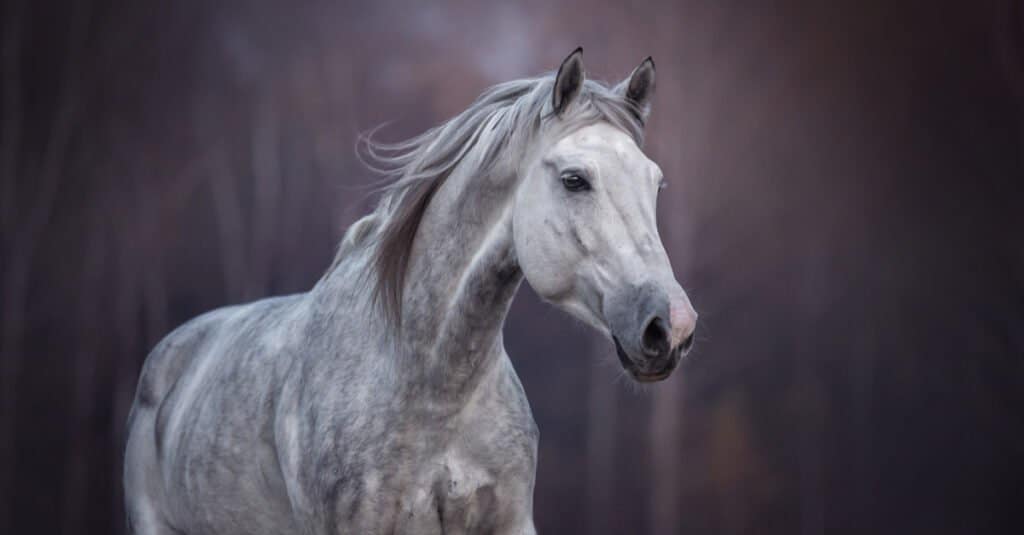
For thousands of years, Arabian horses have existed as a pure breed.
©Osetrik/Shutterstock.com
The Arabian horse has been bred to be both beautiful and biddable for about 4500 years. It’s one of the world’s most popular breeds and has improved the line of many other horse breeds, including racing thoroughbreds. Its head is unmistakable, as it is short, concave, and elegant.
The head of a true Arabian has a jibbah by the Bedouin, which is a long bulge found between the eyes. The eyes are large and spaced farther apart and lower on the head than they are on other types of horses. The ears are small and sometimes have an inward curve. The arched neck is graceful but powerful and flows beautifully into the withers. The horse has a short back, hard, clean legs and a tail held high in proportion to its croup. Even its skeleton is different, for the Arabian has 17 ribs, 16 tail bones, and five lumbar bones. Other horses have 18 ribs, 18 tailbones, and six lumbar bones. The Arabian horse is prized for its stamina as well as its beauty.
Read here for more information about horses.
#8 White Tern
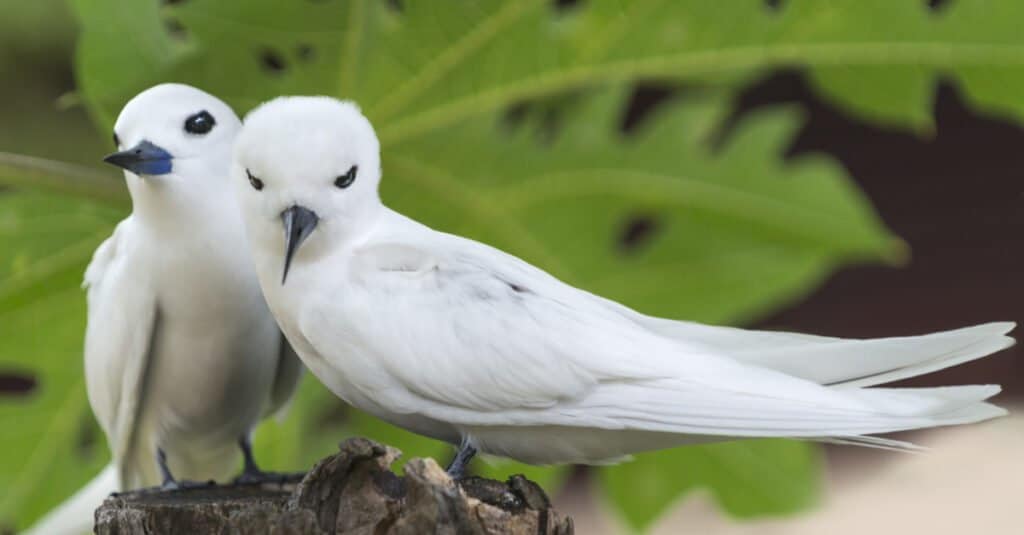
The white tern is so beautiful, it is also known as the “angel tern.”
©Serge Vero/Shutterstock.com
In sharp contrast to the peacock, the white tern, Gygis alba is pure white, with a black bill and large black eyes. Also called the white noddy, it has a 30- to 34-inch wingspan and is found around the coasts of the Pacific Ocean and on islands in the Indian Ocean such as the Maldives and Seychelles. It’s a long-lived bird that can live over 40 years.
Unlike other terns, it doesn’t build a nest on the ground. Indeed, the white tern doesn’t build a nest at all but simply lays its one egg on bare tree branches. Fortunately, the feet of hatchlings have evolved to be able to hold on to tree limbs. The white tern is also the official bird of Honolulu.
Read here for more about birds.
#7 Peacock
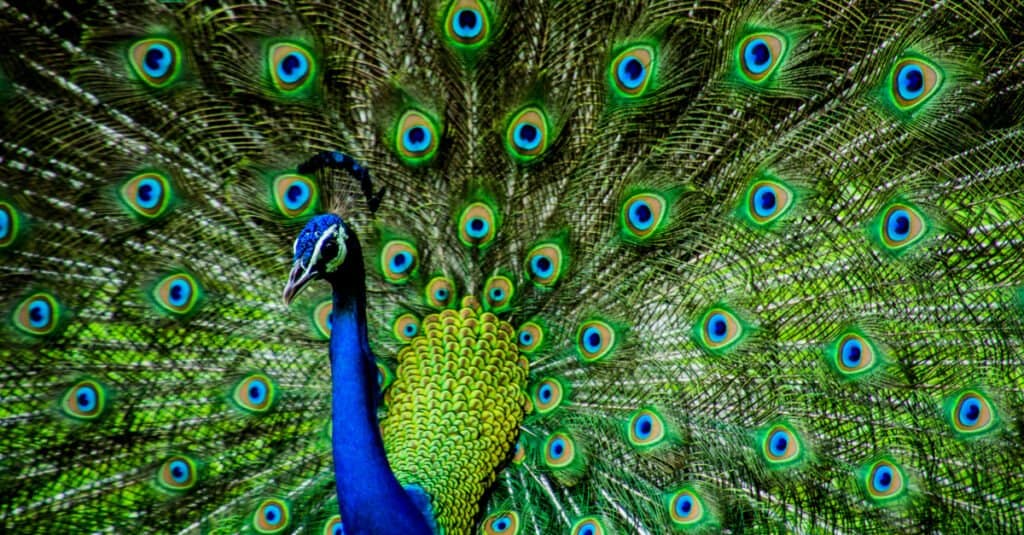
The peacock’s extravagant plumage makes it one of the most beautiful — and colorful — animals on earth.
©Kandarp/Shutterstock.com
Native to Asia and Africa, the peacock is bound to be on a list of the world’s most beautiful animals. Its jewel-like coloration and the male’s stupendous train are unignorable. But again, the peacock didn’t evolve to please humans. Some biologists believe that the train, made of long-tail coverts that end in iridescent eyespots, evolved to demonstrate a male’s fitness to the females. If he could live to breeding age with such an encumbrance, he’s certainly fit to pass on his genes. There are three species of the peacock, Pavo cristatus, Pavo muticus, and Afropavo congensis.
Read here for more information about peacocks.
#6 Undulate, or Orange-lined Triggerfish
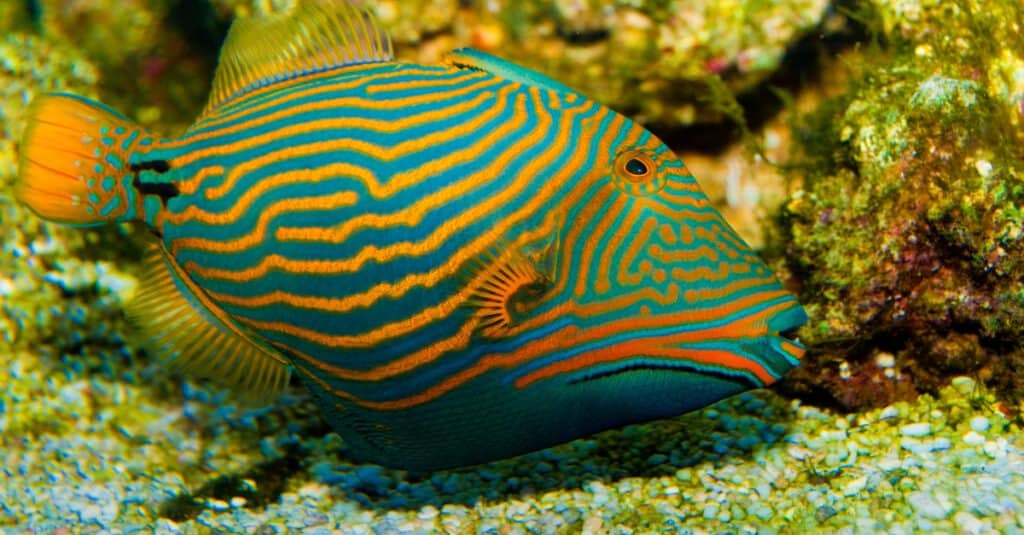
Although the orange-lined triggerfish can be territorial and aggressive with other fish, it is certainly beautiful to look at!
©iliuta goean/Shutterstock.com
This beautiful but unusually shaped tropical fish is about a foot long and native to the coastal waters of the Indo-Pacific. Its body is more or less oval-shaped, very flat with a huge head and a tiny mouth with powerful teeth. Its small eyes are near the top of its head. It has two fins on its back, and the first set is made of three spines that can be retracted. The first spine is erected then locked into place by the second or “trigger” spine, which gives the fish its name. This triggerfish has a lime green or brown body with diagonal, orange-yellow stripes and a black spot on the stem of the tail. The tail itself is orange. Some people keep this fish as a pet, but it must be kept alone in a big tank. It is notoriously mean-tempered and will eat anything it can handle.
Find out more about fish, here.
#5 Scarlet Kingsnake
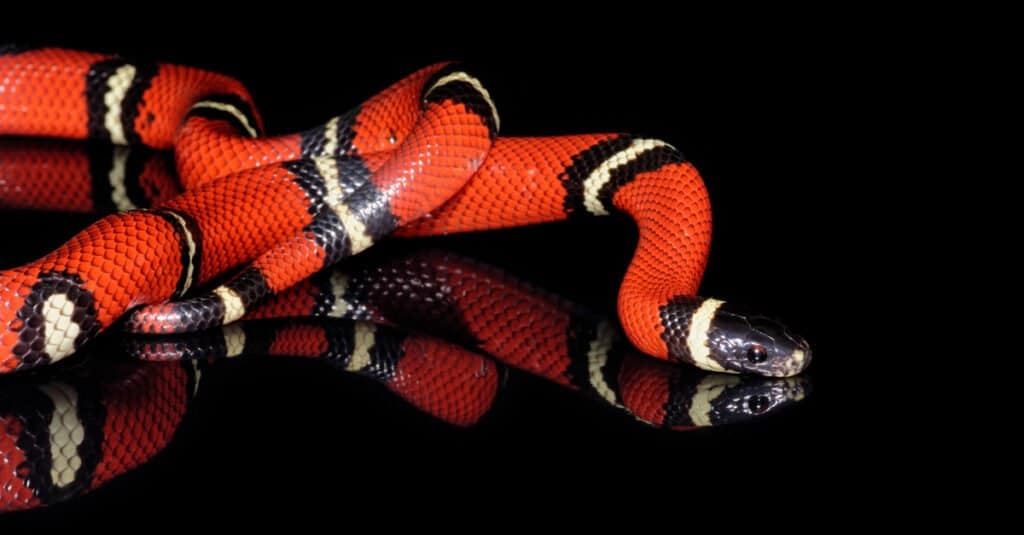
Scarlet kingsnakes are infrequently seen by humans. Thankfully, they aren’t venomous, even if they appear intimidating.
©Valt Ahyppo/Shutterstock.com
This beautiful, nonvenomous snake is found in the pine forests and fields of the American south and east. It grows in length from between 2 to 4.27 feet and has a stunning color pattern of black, red, white, or yellow bands over its body. These bands make potential predators, including humans, confuse it with the venomous coral snake. But a person can tell a kingsnake from a coral snake by looking at its snout, which should be red compared with the black of the coral snake.
Young kingsnakes might be said to be more beautiful than their elders, for their bands are pure red, black and white, and the white yellows with age until it is the color of a ripe apricot. Though the kingsnake can climb and even swim, it prefers being out of sight and likes to hide beneath decaying pine bark or in pine stumps.
Read here for more information about snakes.
#4 Fleischmann’s Glass Frog

They’re certainly pretty, but
glass frog
‘s bodies are also super fragile. Even heavy rains can kill them.
©Agami Photo Agency/Shutterstock.com
This little frog, only 0.8 to 1.26 inches long, is widespread and found in forests that run from Mexico to Venezuela and Ecuador. It is bright, light green with yellow spots and pinpoints of black. Its bulging eyes are golden, its black pupils are horizontal, and it has a blunt little snout. When it’s turned over you’ll see why it has its name. The skin of its belly is transparent, and its internal organs can be seen.
The male frogs spend the breeding season, which runs from late winter to late fall, defending their territory and calling for females. After mating, the females deposit up to 30 eggs on the underside of a leaf over a body of water. Both parents guard them and when it’s time for the tadpoles to hatch, they simply plop into the water.
Read here for more information about frogs.
#3 Beadlet Anemone
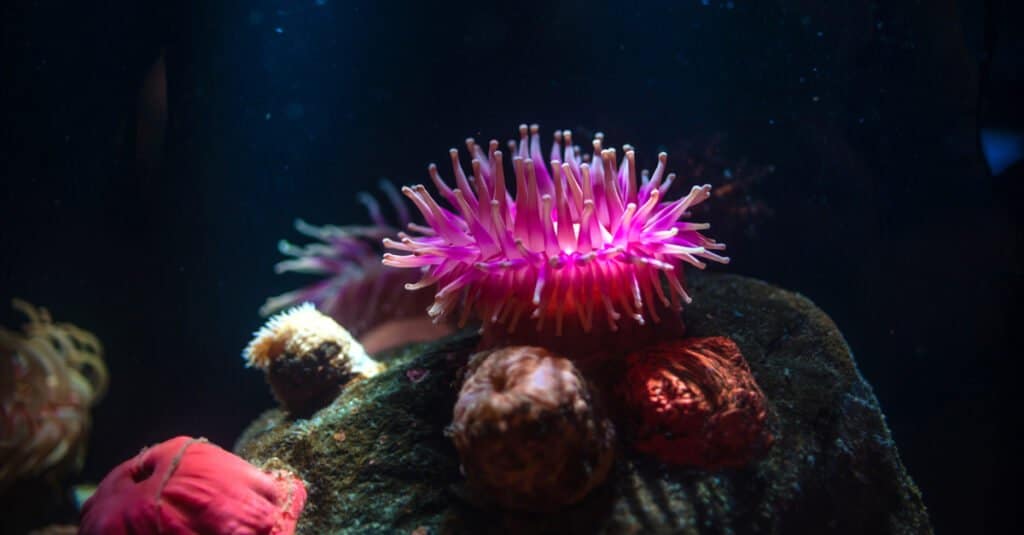
Out of the water, anemones retract and don’t have quite the stunning appearance they do under the water.
©Francesco Cantone/Shutterstock.com
This flower-like little sea anemone is found from the United Kingdom down to the Mediterranean Sea and all the way down the Atlantic coast of Africa. It has a dark red body with as many as 192 lighter red or even pink tentacles. These tentacles can retract completely, leaving a red or orange blob. This ability is useful as the anemone is often found in tidal pools where the tide does not come in for long periods. When the tentacles are open, tiny blue beads can be found just beneath them. These beads are called acrorhagi and contain the anemone’s stinging cells. Still, people sometimes keep beadlet anemones in home aquariums.
Loch’s Chromodoris, which has beautiful white, bluish-white, dark blue, and black stripes running the length of its body and yellow, orange or pink gills.
- Kalinga ornata, an oval-shaped nudibranch found in the Indian and western Pacific Oceans. It is white or translucent and dotted with red and pink. It’s the only nudibranch known to eat brittle stars.
- Hexabranchus sanguineus, or the Spanish dancer, is a big, bright red, orange-red or yellow nudibranch. It gets its name because of its colors and the way it undulates through the water when it’s disturbed reminds people of a flamenco dancer. It lives in the warm waters of the Indo-Pacific.
- Felimare picta, or regal sea goddess, is found in the Mediterranean Sea, the Gulf of Mexico and the eastern part of the North Atlantic Ocean. It has a dark blue body striped and spotted with bright yellow.
- Pteraeolidia ianthina or the blue dragon nudibranch lives in the Indo-Pacific region. Though juveniles of this species are white and blue, adults can be dark blue, dark purple, golden brown, lavender or even green.
Read here for more information about coral reefs.
#2 Nudibranchs
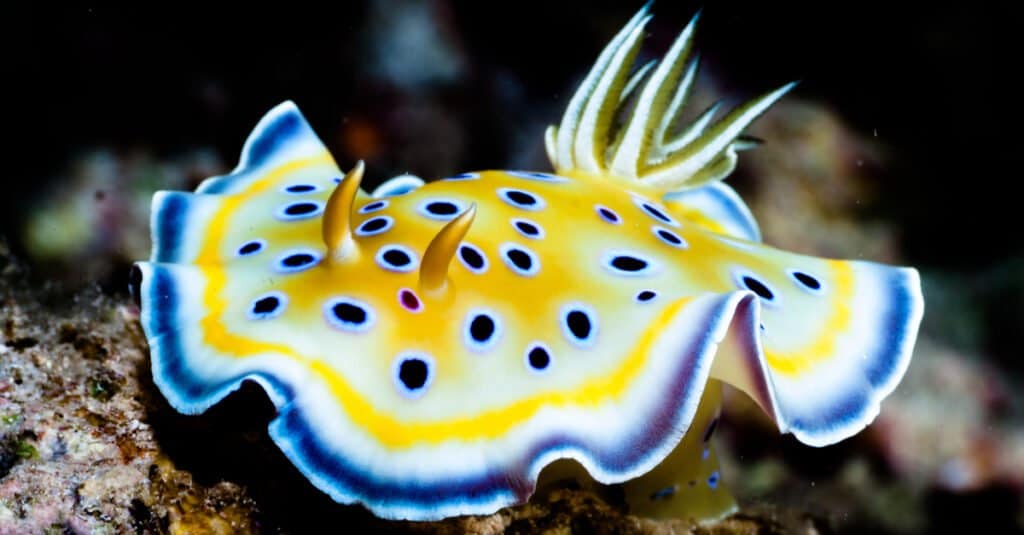
With vibrant colors ranging from red to violet and everything in between, Nudibranchs offer a captivating display.
©Istvan Kovacs/Shutterstock.com
These shell-less sea slugs come in a rainbow of colors. They are found in all the seas of the world, from the chilly Arctic to the even colder Southern Sea around Antarctica. They live in shallow coral reefs and as deep as 8200 feet, and the smallest is about 0.16 of an inch long while the largest is nearly 2 feet in length. Some nudibranchs eat venomous animals such as sea anemones or men of war and store the venom in fleshy spikes on their bodies called cerata. They’re hermaphrodites, and their genitals are right behind their heads and on the right side of the body. There are about 3,000 species of nudibranchs. Read here for more information about nudibranchs.
#1 Chrysina aurigans
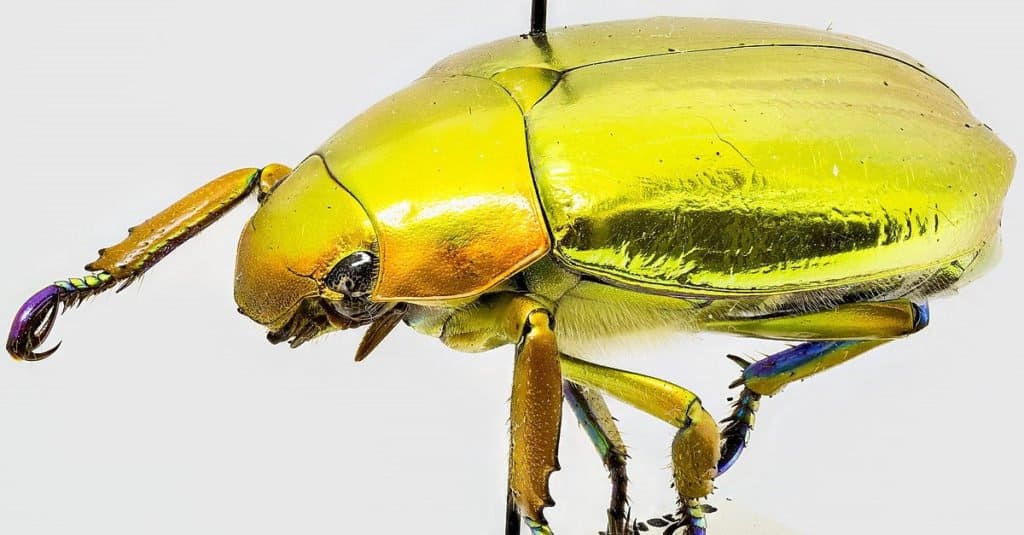
Chrysina beetles are also known as “jewel” scarabs and look like nuggets of polished, 24-karat gold.
©Brett Forsyth from Geulph, Canada / CC BY 2.0 – License
Though it’s tempting to list some gorgeous species of butterfly such as the mother-of-pearl morpho, the most beautiful insect in the world is simply Chrysina aurigans. Growing a bit over a half an inch to a little over an inch in length, this beetle of the Costa Rican rainforest looks like a nugget of polished, 24-karat gold. Though its shimmering color is an optical illusion, any insect that looks like it’s made out of solid gold is going to beat out even the most sensationally colored lepidopteran.
Read here for more information about beetles.
Summary of the 10 Most Beautiful Animals in the World
You’ll want to take a second glance at the animals that made our top 10 as the most beautiful to behold:
| Rank | Animal |
|---|---|
| 1 | Chrysina aurigans |
| 2 | Nudibranch |
| 3 | Beadlet Anemone |
| 4 | Fleischmann’s Glass Frog |
| 5 | Scarlet Kingsnake |
| 6 | Undulate, or Orange-Lined Triggerfish |
| 7 | Peacock |
| 8 | White Tern |
| 9 | Arabian Horse |
| 10 | Siberian Tiger |
Honorable Mentions: More Beautiful Animals
While there’s no denying the above 10 animals are truly beautiful creatures to be admired, there are so many other animals that didn’t make that cut, but are beautiful nonetheless. We wanted to mention a few more animals you should check out for their extraordinary beauty.
Rainbow Snake (Farancia erytrogramma)
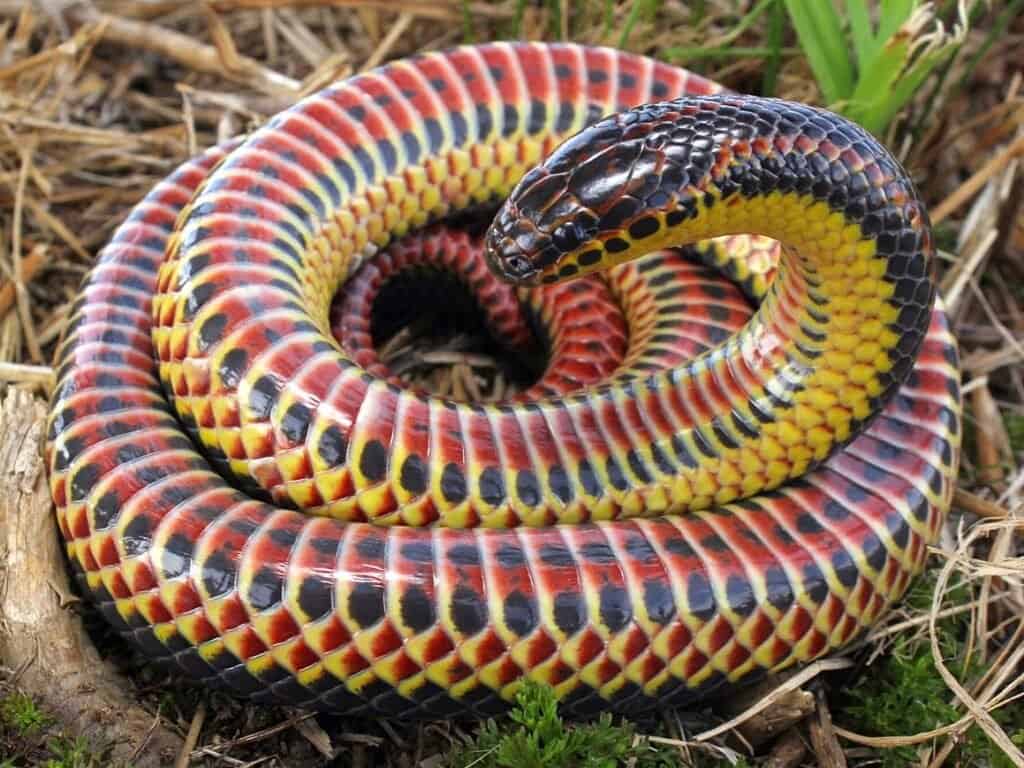
The rainbow snake, one of the most beautiful in the world, is native to the southeastern United States.
©Charles Baker / CC BY-SA 4.0 – License
The rainbow snake, also called the eel moccasin, has gorgeous multi-colorations that evoke the rainbow. Its underbelly and sides are particularly beautiful with alternating scale colors of red, yellow, black, brown, and orange.
While these beauties inhabit marshes and swamps in the southeastern United States, you’d be hard-pressed to witness one in the wild, as they are shy creatures that keep will hidden in dense plant growth or in the water.
Morpho Butterfly (Morpho peleides Kollar)
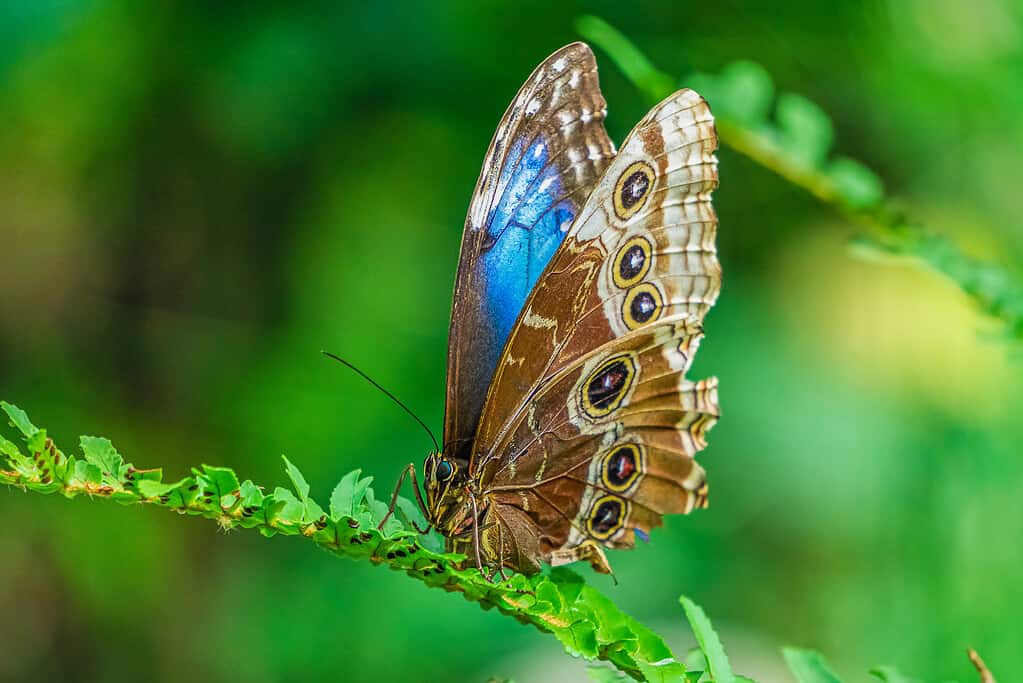
Blue morpho butterfly, Morpho peleides showing brown underside that is used for camouflage.
©Seda Yalova/Shutterstock.com
We could just make things easier for ourselves and say all butterflies, as it’s fairly impossible to pick on as the “most beautiful.” That being said, the morpho butterfly is a truly gorgeous variety. Their trademark beauty lies in their metallic, iridescent wing colors, with males usually being more vibrant in color than females. Species like the blue morpho have lovely blue wings with other hues like purple and green.
The stunning coloration of these butterflies is due to microscopic ridges on their wing scales, which include glass scales and ground scales. These ridges reflect light in a way that creates the illusion of vibrant colors. This serves as a potential deterrent to predators, which may associate bright hues with toxicity.
Red Panda (Ailurus fulgens)

What “beauty” list would be complete without a nod to the red
panda
?
©Abeselom Zerit/Shutterstock.com
Maybe “cute” is a better descriptive word for the red panda, native to the Himalayas, but we just think falls among the ranks of most beautiful animals ever! Not only does it have gorgeous bright red fur that any furry critter would envy, but its tail with alternating brighter and darker shades of fur, coupled with a face of unique white markings, and piercing gold-brown eyes make this animal a true stunner. They are more closely related to raccoons than any other animal from an evolutionary standpoint.
The photo featured at the top of this post is © Volodymyr Burdiak/Shutterstock.com
Thank you for reading! Have some feedback for us? Contact the AZ Animals editorial team.






